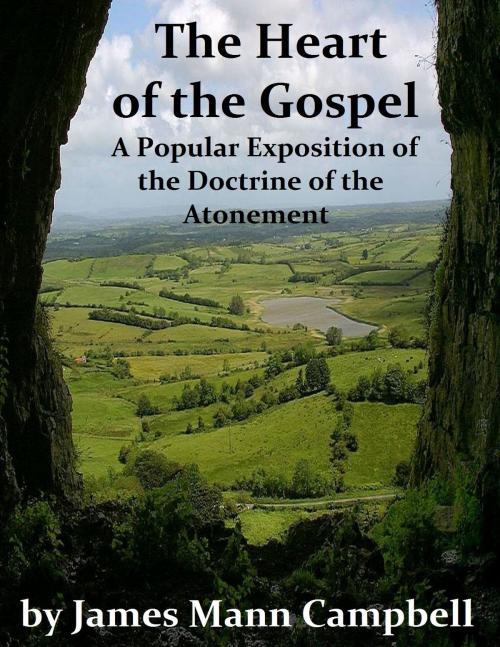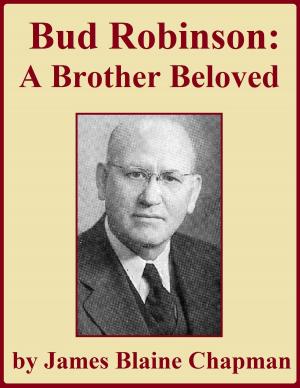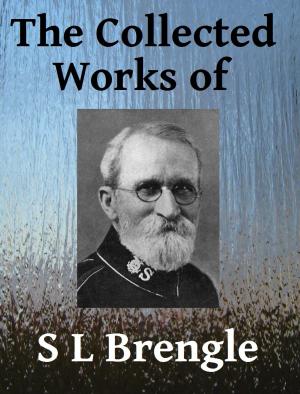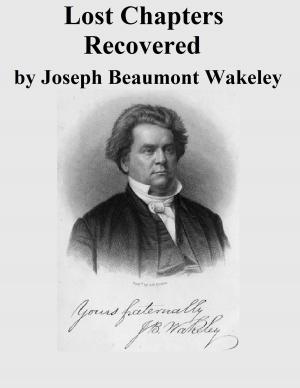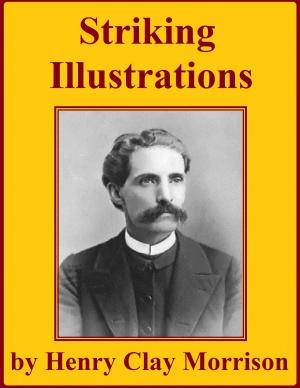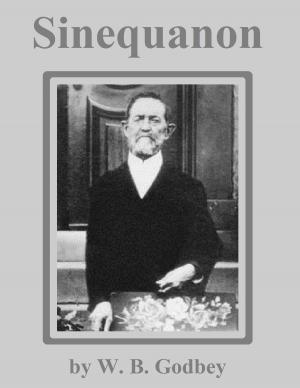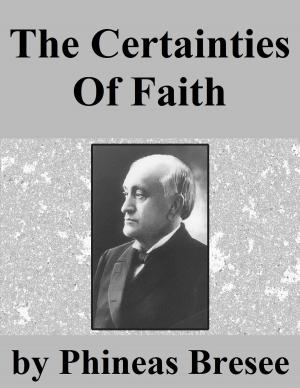The Heart of the Gospel
A Popular Exposition of the Doctrine of the Atonement
Nonfiction, Religion & Spirituality, Christianity, Christian Sermons, General Christianity, Christian Life| Author: | James Mann Campbell | ISBN: | 1230000517232 |
| Publisher: | Jawbone Digital | Publication: | June 27, 2015 |
| Imprint: | Language: | English |
| Author: | James Mann Campbell |
| ISBN: | 1230000517232 |
| Publisher: | Jawbone Digital |
| Publication: | June 27, 2015 |
| Imprint: | |
| Language: | English |
From the preface:
THERE is perhaps no doctrine of Scripture regarding which Christian teachers of to-day are more at sea than the doctrine of the Atonement. In the following pages an attempt has been made to present that doctrine in a popular and practical form, in its relation to modem thought, and with due regard to its historical perspective. Special attention has been given to the recent literature on the subject. Theological questions are considered as questions of the soul and of the religious life, and not merely or mainly as questions of the intellect. The point of view which is occupied is that of the preacher, who, in a time of transition, is trying to find for himself and for others a bit of solid standing-ground upon which faith can plant her feet and confidently affirm, "Whatever else is uncertain, this much is sure." In other words, the thing sought for is to find the basis for the new evangel which is to bring in the new evangelism, in a conception of the Atonement which is at once vital, reasonable, and preachable.
The Table of Contents are as follows:
Chapter 1: INTRODUCTION
Chapter 2: THE USE OF TERMS
Chapter 3: THE ATONEMENT IN OLD TESTAMENT TEACHING
Chapter 4: THE PLACE OF THE ATONEMENT IN NEW TESTAMENT TEACHING
Chapter 5: THE PROBLEM INVOLVED
Chapter 6: THE ATONEMENT A THING OF PERSONAL RELATIONS
Chapter 7: THE FORGIVENESS OF SIN
Chapter 8: THE BARRIER TO BE REMOVED
Chapter 9: THE PRODUCTION OF REPENTANCE
Chapter 10: THINGS THAT FOLLOW REPENTANCE
Chapter 11: THE DIVINE INITIATIVE
Chapter 12: ADJUSTMENT
Chapter 13: ONENESS OF CHRIST WITH MAN
Chapter 14: ATTEMPTED EXPLANATIONS
Chapter 15: THE MARROW OF CHRIST'S MEDIATION
Chapter 16: THE RATIONALE OF THE CROSS
Chapter 17: THE VICARIOUS PRINCIPLE
Chapter 18: THE WHOLENESS OF CHRIST'S WORK
Chapter 19: THE CONSCIOUSNESS OF JESUS
Chapter 20: THE PERSONAL EQUATION
Chapter 21: THE ATONEMENT AS AN ETHICAL FORCE
Chapter 22: THE EVANGELICAL MOTIVE
Chapter 23: OBJECTIVE AND SUBJECTIVE RELATIONS
Chapter 24: THE FUNCTION OF FAITH
Chapter 25: A SPIRITUAL REALITY
Chapter 26: THE CROSS AN APPEAL TO THE IMAGINATION
Chapter 27: THE SACRAMENTS AND THE ATONEMENT
Chapter 28: THE HOLY SPIRIT AND THE ATONEMENT
Chapter 29: THE ATONEMENT CONTINUOUS
Chapter 30: SOCIAL BEARINGS
Chapter 31: THE TIMELESSNESS OF THE ATONEMENT
Chapter 32: THE PURPOSE OF THE AGES FULFILLED IN THE ATONEMENT
About the author:
James Mann Campbell was born in Scotland on May 6, 1840, and was educated at the University of Edinborough, one of his intimate friends and classmates was Alexander Graham Bell, the inventor of the Telephone, who was at that time a teacher of the deaf in Edinborough. After finishing his theological studies, he was for some years a minister in Laughlin Dumfriesshire. He emigrated with his family, a wife and four children in 1873 and for some time filled various pastorates in Illinois.
In 1882 he was called to the Congregational Church at Watertown, and served that congregation for nine years.
He afterwards preached to a Congregational church in Lombard, Illinois, and after some years went to California. He has written a great many books, mostly of a religious nature, several since he became blind. He organized a church in Manhattan Beach after he was over seventy years of age.
He kept up his activities as a Christian minister, until blindness (optic atrophy) made it impossible. At this time, it seems he retired to a small orange grove, which was managed by his son, Theodore.
He passed from this life on May 7, 1926.
From the preface:
THERE is perhaps no doctrine of Scripture regarding which Christian teachers of to-day are more at sea than the doctrine of the Atonement. In the following pages an attempt has been made to present that doctrine in a popular and practical form, in its relation to modem thought, and with due regard to its historical perspective. Special attention has been given to the recent literature on the subject. Theological questions are considered as questions of the soul and of the religious life, and not merely or mainly as questions of the intellect. The point of view which is occupied is that of the preacher, who, in a time of transition, is trying to find for himself and for others a bit of solid standing-ground upon which faith can plant her feet and confidently affirm, "Whatever else is uncertain, this much is sure." In other words, the thing sought for is to find the basis for the new evangel which is to bring in the new evangelism, in a conception of the Atonement which is at once vital, reasonable, and preachable.
The Table of Contents are as follows:
Chapter 1: INTRODUCTION
Chapter 2: THE USE OF TERMS
Chapter 3: THE ATONEMENT IN OLD TESTAMENT TEACHING
Chapter 4: THE PLACE OF THE ATONEMENT IN NEW TESTAMENT TEACHING
Chapter 5: THE PROBLEM INVOLVED
Chapter 6: THE ATONEMENT A THING OF PERSONAL RELATIONS
Chapter 7: THE FORGIVENESS OF SIN
Chapter 8: THE BARRIER TO BE REMOVED
Chapter 9: THE PRODUCTION OF REPENTANCE
Chapter 10: THINGS THAT FOLLOW REPENTANCE
Chapter 11: THE DIVINE INITIATIVE
Chapter 12: ADJUSTMENT
Chapter 13: ONENESS OF CHRIST WITH MAN
Chapter 14: ATTEMPTED EXPLANATIONS
Chapter 15: THE MARROW OF CHRIST'S MEDIATION
Chapter 16: THE RATIONALE OF THE CROSS
Chapter 17: THE VICARIOUS PRINCIPLE
Chapter 18: THE WHOLENESS OF CHRIST'S WORK
Chapter 19: THE CONSCIOUSNESS OF JESUS
Chapter 20: THE PERSONAL EQUATION
Chapter 21: THE ATONEMENT AS AN ETHICAL FORCE
Chapter 22: THE EVANGELICAL MOTIVE
Chapter 23: OBJECTIVE AND SUBJECTIVE RELATIONS
Chapter 24: THE FUNCTION OF FAITH
Chapter 25: A SPIRITUAL REALITY
Chapter 26: THE CROSS AN APPEAL TO THE IMAGINATION
Chapter 27: THE SACRAMENTS AND THE ATONEMENT
Chapter 28: THE HOLY SPIRIT AND THE ATONEMENT
Chapter 29: THE ATONEMENT CONTINUOUS
Chapter 30: SOCIAL BEARINGS
Chapter 31: THE TIMELESSNESS OF THE ATONEMENT
Chapter 32: THE PURPOSE OF THE AGES FULFILLED IN THE ATONEMENT
About the author:
James Mann Campbell was born in Scotland on May 6, 1840, and was educated at the University of Edinborough, one of his intimate friends and classmates was Alexander Graham Bell, the inventor of the Telephone, who was at that time a teacher of the deaf in Edinborough. After finishing his theological studies, he was for some years a minister in Laughlin Dumfriesshire. He emigrated with his family, a wife and four children in 1873 and for some time filled various pastorates in Illinois.
In 1882 he was called to the Congregational Church at Watertown, and served that congregation for nine years.
He afterwards preached to a Congregational church in Lombard, Illinois, and after some years went to California. He has written a great many books, mostly of a religious nature, several since he became blind. He organized a church in Manhattan Beach after he was over seventy years of age.
He kept up his activities as a Christian minister, until blindness (optic atrophy) made it impossible. At this time, it seems he retired to a small orange grove, which was managed by his son, Theodore.
He passed from this life on May 7, 1926.
